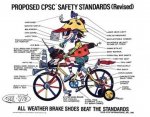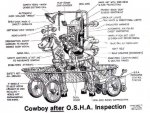- Jan 4, 2016
- 5,288
- Pool Size
- 44000
- Surface
- Plaster
- Chlorine
- Salt Water Generator
There's nothing wrong with being extra careful and over time, you'll probably get really good at keeping close to your target. Kim's point is also valid in that some people do what I think of as over-steering, and then get into trouble. Allowing yourself ranges, e.g. pH 7.5 to 7.8 inclusive and CSI -0.3 to +0.1, gives the pool time to react and settle, so you then have a chance of finding your pool's sweet spot.
Scaling can actually happen very quickly, so you'll have an upper limit. I can see mine by little bits of scale on tile grout near the skimmer throat at the waterline which I scrape off with my fingernail. In my daughter's pool, I can see it on the SWG if I let CSI get too high. I talked to another member the other day who sees the odd flake from his SWG after polarity reversal. These problems go away once CSI is lowered, but serve like canaries in the coal mine to help you find your upper limit.
I'm very supportive of being thorough and gaining a strong understanding of water balance. It's also fair to say that it takes more attention to keep pH lower than it's sweet spot. By example, pH 7.4 tends to take more testing and adjusting than pH 7.8 because the carbon dioxide in the water is reacting with the atmosphere, which puts upward pressure on pH. The lower the pH, the stronger the upward trend because the reaction with the atmosphere is stronger. The higher the TA, the stronger the upward trend.
My tendency at the start was to believe that there's a single ideal number, but reality taught me that it's a range because of variations in temperature, incoming dissolved salts, use of pool cover, activity that raises aeration, splashout, and so on. I applaud you for learning all the ins and outs early on, because as you say, that will undoubtedly extend the life of your pool, which is what many of us are here for, along with wanting the safest, kindest, clearest water for swimming
Scaling can actually happen very quickly, so you'll have an upper limit. I can see mine by little bits of scale on tile grout near the skimmer throat at the waterline which I scrape off with my fingernail. In my daughter's pool, I can see it on the SWG if I let CSI get too high. I talked to another member the other day who sees the odd flake from his SWG after polarity reversal. These problems go away once CSI is lowered, but serve like canaries in the coal mine to help you find your upper limit.
I'm very supportive of being thorough and gaining a strong understanding of water balance. It's also fair to say that it takes more attention to keep pH lower than it's sweet spot. By example, pH 7.4 tends to take more testing and adjusting than pH 7.8 because the carbon dioxide in the water is reacting with the atmosphere, which puts upward pressure on pH. The lower the pH, the stronger the upward trend because the reaction with the atmosphere is stronger. The higher the TA, the stronger the upward trend.
My tendency at the start was to believe that there's a single ideal number, but reality taught me that it's a range because of variations in temperature, incoming dissolved salts, use of pool cover, activity that raises aeration, splashout, and so on. I applaud you for learning all the ins and outs early on, because as you say, that will undoubtedly extend the life of your pool, which is what many of us are here for, along with wanting the safest, kindest, clearest water for swimming







